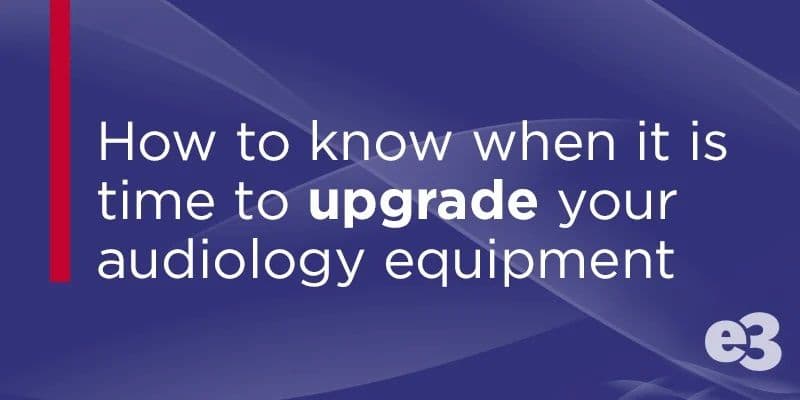How to Know When It's Time to Upgrade Your Audiology Equipment

Properly maintaining and caring for your audiology equipment is paramount. A new hearing screening or diagnostic instrument isn’t cheap, so you want to get as many years out of it as possible. However, regardless of how well you’ve taken care of your audiometer, tympanometer, or OAE, there comes a time when you need to consider upgrading your equipment to ensure you’re operating at your most efficient and your patients are receiving the best treatment possible.
Keeping up with the times
Equipment that you have had around your practice for years may still work as well as the day you bought it, but it likely doesn’t offer the features made possible by advancements that have occurred over the past few years. For instance, the Level-Specific CE-Chirp® is a newer stimulus that has the potential to halve ABR test times. As a result, there is less time for the infant to wake up in the middle of the evaluation and disrupt it. Level Specific CE-Chirps© were introduced in 2016, nearly 10 years after advent of the original CE-Chirp® stimulus, so chances are equipment manufactured before then doesn’t offer it.
Staying current has its major upsides. That’s why modular equipment, such as the Interacoustics Eclipse, is so beneficial. With this instrument, you only need to only purchase the hardware one time. As Interacoustics develops and releases future modules for it, you just buy the software and install it. It’s a cost-effective way to remain at the forefront of hearing testing technology.
Also, with all of the benefits that come from Electronic Medical Records (EMR) storage, and the pressure coming from the federal government to move to it, it may be in your best interest to have equipment that can easily and securely connect to an EMR database. This isn’t always easy with older equipment, but newer instruments are designed with this in mind. One of our best-selling audiometers, the GSI AudioStar Pro, seamlessly connects to your PC for HIPAA-compliant data storage and EMR/EHR compatibility. Likewise, the MAICO MA 42 easily integrates with NOAH for secure storage of patient data.
All good things must come to an end
Another sign that it’s time to replace your equipment is when you receive the dreaded notice that the manufacturer has discontinued production of the device you’ve used to test patients for years. When an instrument is no longer being made, manufacturing of replacement parts stops as well. These parts then become scarce, making them harder to find and more expensive to buy. At some point in time, too, customer support from the manufacturer or distributor will cease.
Also, when you begin to experience frequent breakdowns, that’s a sign that the end is near. The last thing you want is to lose money in costly repairs and cancelled or rescheduled appointments. There’s even a possibility that a patient will go elsewhere if their need is urgent. It comes to a point where spending money on a new, reliable piece of audiology equipment will cost less than maintaining your old instrument in the long run.
When you eventually decide to upgrade to new instruments, plan correctly and choose a timeframe to have the equipment installed that won’t interfere with your day-to-day work. Also, get in touch with your local e3 experts. They’ll assess your needs and guide you to the instruments that will best suit them.
If you’re ready to say out with the old and in with the new, find your local e3 office today and speak with your dedicated equipment consultant!
